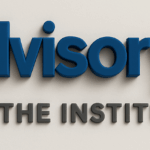Guest Author: Ronald Recardo
Last week, we discussed the first three of the ten most important tenets for outstanding leadership:
- Leaders cannot save their company to prosperity
- Good leadership does not equal being liked
- Self awareness/high emotional intelligence is essential for engagement
This week, we will continue our discussion with the next four tenets.
- Think strategically but have good executional skills. The leaders of tomorrow must have the ability to think conceptually and strategically in understanding very complex and global business markets/challenges. They must be exceptionally chess players thinking several moves ahead on the chess board of business.
Leaders must become facile with data analysis to fully understand their markets, competitors, and customers, identify unmet needs,and then be able to align their business model and growth engines to increase shareholder value. They also need to be able to be open to countervailing views that shake their current understanding and conventions.
This reminds me of a conversation I recently had with the head of a large business segment in the Life Sciences industry. Having completed a strategic planning project with him he casually asked me over dinner one night, what did I think of his business? I answered, “I think you are in deep trouble. Your internal new product development process is costing you 100’s of millions of dollars and all you are getting is product extensions, your business model is bloated with a number of SBU’s each with their own senior team (creating incredible cost burden your competition doesn’t have), and supply chain and sales functions should be optimized across the organization not at the SBU level.” These are observations any good MBA should have made; they were not profound. In fact, they should have been obvious to this leader and the senior team but the leader could not conceive that the underlying business paradigms were no longer appropriate, and in fact,adversely impacting financial performance.
Soon after the financial performance of his business precipitously declined and he found himself a casualty of business – he was asked for his resignation. The learning is good leaders solicit input and data and use that data to inform their decisions – changing their strategy if needed.
One of the executives we interviewed noted that too many executives are uncomfortable with getting their fingers dirty and have weak implementation skills. She asserts, “Too many executives today are great with pulling out a napkin and outlining conceptual thinking at an 80,000 foot level but they don’t want to get their fingers dirty with the detail. You can’t solve problems unless you understand the underlying processes. I regularly meet with employees to learn in detail what they are doing.”g and when appropriate coach them on execution”.
The most profitable growth is often around applying one’s core capability to an unmet market need. It is much harder to win the war by underpricing or out promoting the competition in an existing market. Often winning can be obtained by identifying Blue Ocean opportunities. This term was coined by W. Chan Kim and Renee Mauborgne professors of strategy at INSEAD, one of Europe’s top business schools2. Based on 15 years of research analyzing many different companies across 30 industries they contend that the highest growth and profits are often best generated by creating new demand in an uncontested market space they call Blue Ocean (See Table 1.)
Table 1: Key Principles of Blue Ocean Theory

Strategic thinking and direction setting is much more than focusing a lot of time on writing a vision and mission statement. Frankly I am not aware of any company that has obtained competitive advantage by having the best-written statement. It’s about creating an atmosphere that promotes difficult conversations and processing data to make smart strategic decisions.
An underutilized tool is social media. This can be tapped using technology based tools like Linked-In or Twitter that allow you to better understand consumer behavior, what is working/not working in other companies, and key environmental trends.
- Too much collaboration equals abrogation. Business is not a democracy, nor does it have to be a dictatorship. An alarming trend is leaders who consciously avoid making decisions because they either lack the confidence in their capabilities or are fearful of the repercussions of making a bad decision. Reward systems (base,bonus, equity) often compensate the wrong behaviors (risk aversion) and tenure instead of value creation and outcomes.
The highest performing leaders are not afraid to make unilateral decisions. The voice in their head is most likely the reason they are sitting in the corner executive seat. If a leader does not listen to this and exercise his or her 51% vote that leader is the one most likely to not have a seat when the music stops!
The highest performing leaders acutely recognize that behaviors drive operational and financial performance. Leaders must ensure there are meaningful consequences to both reward outstanding performance and sanctions with teeth for non performance. Most organizations today believe they have a pay for performance reward system. Behind closed doors many are still carrying a lot of “dead weight” because career progression in many organizations is heavily based on relationship management instead of generating results or value creation. The key to career progression has been to develop relationships with rising or key executives and ride their coat tails up the corporate ladder. Leaders need to model the right behaviors. They need to refuse to accept mediocrity and ensure the best performers are rewarded in a tangible and differentiated way. If the spread between an outstanding performer and an average performer is a 1-2% pay increase difference, do employees really think this is creating a meaningful consequence? Leaders must ensure there is internal equity in their reward systems. One of the keys is to tightly align the HR practices to support the business strategy. According to one of the executives we interviewed, “We use a meritocracy based system that allocates rewards in a differentiated way. The individuals who are at the highest performance level receive twice or more the rewards of an average performer. The lowest performers get no merit increases as well as limited bonus payouts and are either coached to improve their performance, aligned with a better role, or moved out.”
- Effective leaders understand performance drivers. Many leaders lack a clear understanding of the cause and effect that drives organizational performance. If a leader understands the drivers of business performance, then that leader can develop leading metrics that can predict business results. For example, if abio-pharma company analyzes what drives revenue they might find that historically there is a statistical relationship between number of physician sales calls and revenue generation. A statistical analysis of past performance might reveal that X number of calls physicians results in Y number of meetings. With a close rate of AB they can create an algorithm that links calls to revenues. So if that company is in the middle of a quarter and behind in revenues, it is now clear what the leader needs to do to increase sales.
The highest performing leaders use tools such as a strategy map (which can be used to identify performance drivers) and a balanced scorecard. The scorecard is then cascaded to compensation, budgeting, and the performance management practices for individuals who manage the business on a day-to-day basis. Once cause and effect are understood, the staff is educated to provide employees with “line of sight” so they understand exactly how they impact the top and bottom line.
The utilization of appropriate checks and balances ensures the reward system has internal equity and will minimize the halo effect. One way to do this is to correlate unit performance with individual performance. For example, if there is a business unit with a headcount of 400 and 95%of them are rated as outstanding and exceed performance expectations than the overall unit should be exceeding its performance targets. If not, something is broken(poor performance metrics, leaders are not having difficult discussions with employees and challenging weak performance, etc.) and there is no internal equity.
Another check and balance is the use of calibration. Leaders evaluate their direct reports across a conceptual continuum from hard graders to easy graders. By reviewing and potentially adjusting up/down evaluations you can normalize the evaluations across your leadership team based on cultural factors, business conditions, and your business strategy.
- Attract, develop, and promote staff based on impact not on ancillary factors. Being faddish, most organizations today spend a considerable amount of time communicating the importance of talent management. They define what is a “key position,” and who are the “ready now” successors. This well-intentioned exercise commonly turns into a fairly mechanical process of updating the names in the boxes. It is mechanical because often a very small percentage of these “ready now” successors are actually promoted when the key positions become vacant or the folks who are promoted are perceived as a bunch of “empty suits” (no internal validity). One of the leaders we interviewed noted, “hiring/promotion decisions need to be based on a person’s performance and potential ability to complement the team and not be based on political issues or personal relationships.” Leaders need to create things that have not been done before and encounter unknown events that require intuitive navigation. First hire innately smart athletes, not those who can only demonstrate already learned skills. Then invest in these athletes by providing enough time to obtain the right experience.
Too many organizations have fallen into the trap of looking for the silver bullet that in one svelte swoop will fix a complex problem. Look at the organization charts of many companies and one cannot help but see similarities in the dominant coalition. A disproportionate number of the executives:
- Have identical company pedigrees (GE or Pepsi folks – with the naïve assumption that everyone who has worked in these organizations is a super star);
- Have similar educational criteria (All third generation Stanford University or Ivy leaguers);
- Have very similar socio-demographic characteristics;
- Are promoted based on developing a tight relationship with a sponsor and not through achieving results (Called the Friends of X syndrome).
Disregarding organizational rhetoric, too many leaders today are promoted based on their sizzle not their substance or the impact or results they deliver. For those of you who are reading this and are taken aback, ask yourself the following rhetorical question, “How many times have you walked out of a meeting with a senior executive and shook your head saying I cannot believe this person makes $500K?” If it is obvious to you, it is equally obvious to the employee base. The HR practices work best when employees perceive internal equity.
HR practices such as talent management, performance management, and compensation have to be seen as being fair and equitable and capable of differentiating those who are outstanding performers from those who are the weakest performers. Presidents and CEO’s have to challenge promotional/hiring decisions to ensure well designed HR practices achieve the desired outcomes.
Next week, we will conclude our discussion of the ten most important tenets for outstanding leadership.
About the Author:





